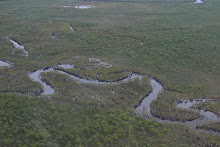
By Rich Bowden
Img: Parkes Observatory, NSW. Credit: Diceman Stephen West.
In what is believed to be a world first, Australian students have recorded their takeover of a major Australian telescope using the Internet and have employed micro-blogging social networking site Twitter to monitor their observations.
The program, known as Pulse@Parkes, has attracted international interest with observers from U.S. space administration NASA signing up to watch the event, reports the Commonwealth, Scientific and Industrial Research Organisation (CSIRO) in a news release.
Victorian schools Footscray City Secondary College, Braemar College, and Strathmore Secondary College are involved in the pilot project to observe distant pulsars.
Though hampered by some glitches, the success of the venture can be gauged by some of the Twitter responses:
"J0437-4715 still observing", starts one response.
"received really strong observation of pulsar. one of the brightest pulsars so far", observes another.
"really fast pulsar rotation, one period in 1.5 milliseconds", tweets another giving calculations.
Professor Brian Boyle, director of the CSIRO Square Kilometre Array (SKA)project, said the idea behind the collaboration was to put observations in the hands of students, including those who will eventually run the SKA -- an international radio telescope to be constructed on Australian soil that will be the most powerful such device in the world.
"We are putting frontline astronomical research straight into the hands of the young people who are going to be the ones using the SKA," he said.
CSIRO’s Australia Telescope National Facility (ATNF), which operates Parkes telescope, said the model will be extended. And, ATNF Education Officer and PULSE@Parkes coordinator Mr. Rob Hollow said there are also moves to include other telescopes in the program.
"From there we’ll be looking to make other kinds of observations, such as studying the hydrogen gas in space that is the raw material for forming stars," said Mr. Hollow.
Article first published in The Tech Herald.




.jpg)

.jpg)
No comments:
Post a Comment